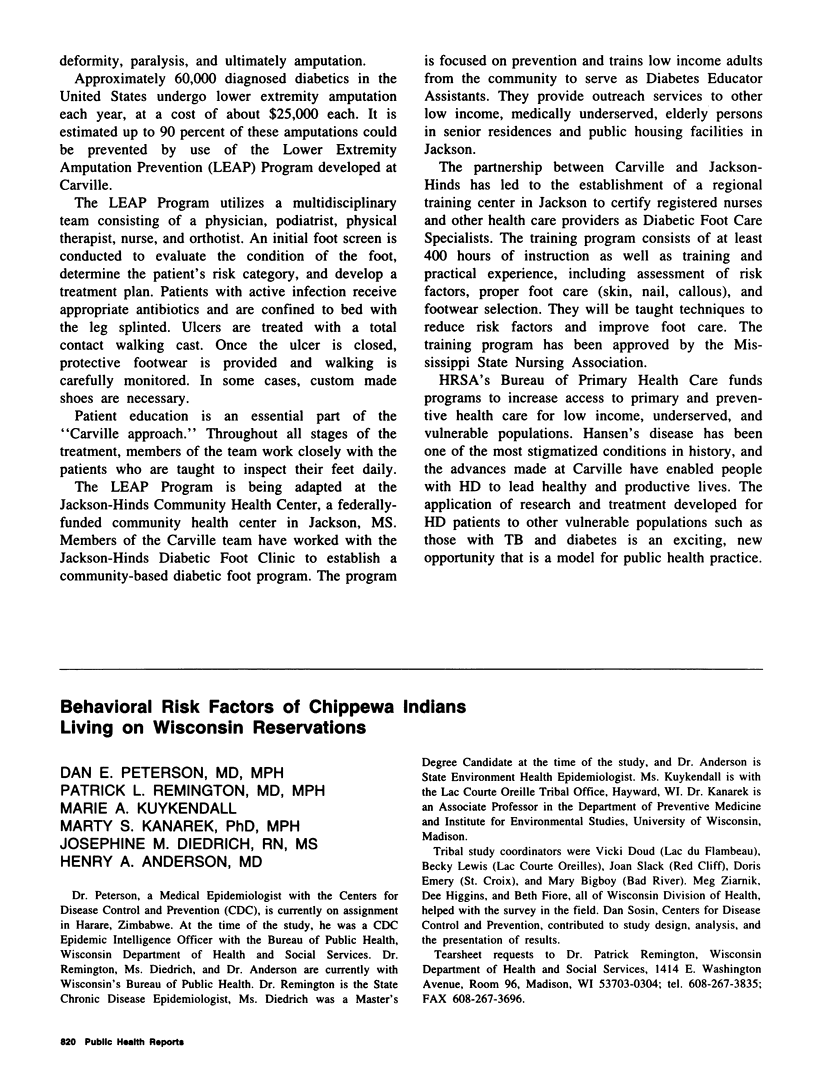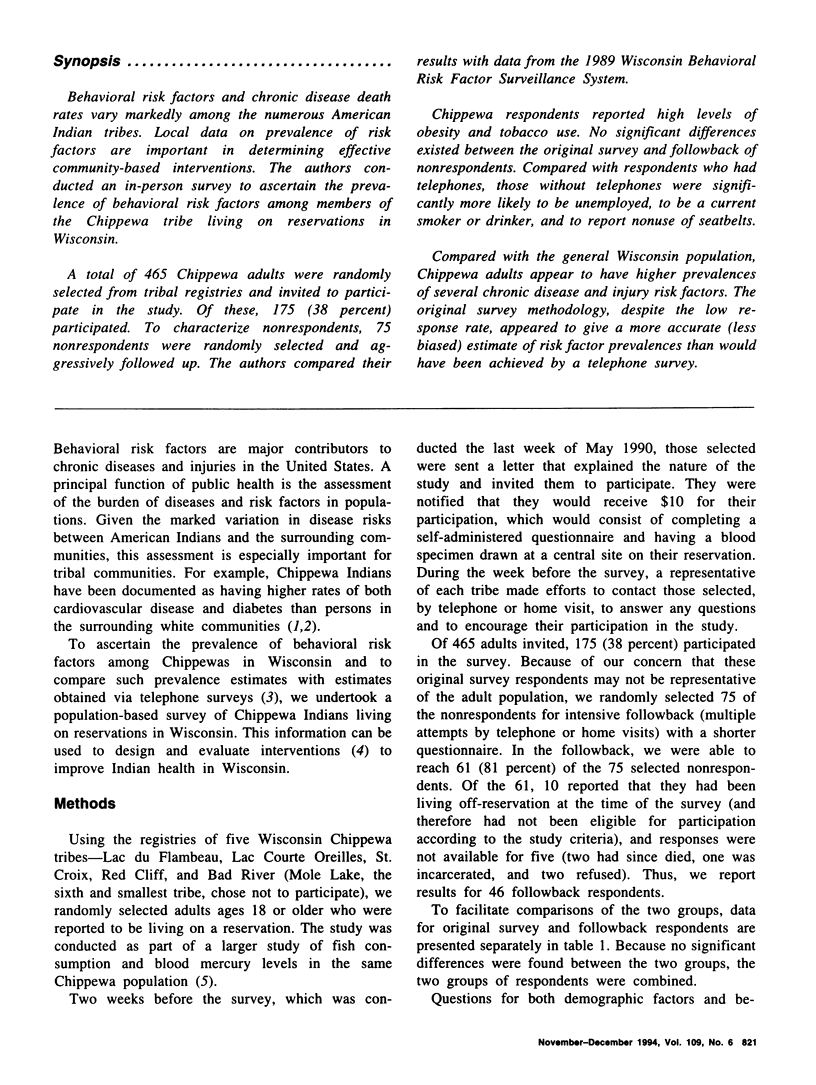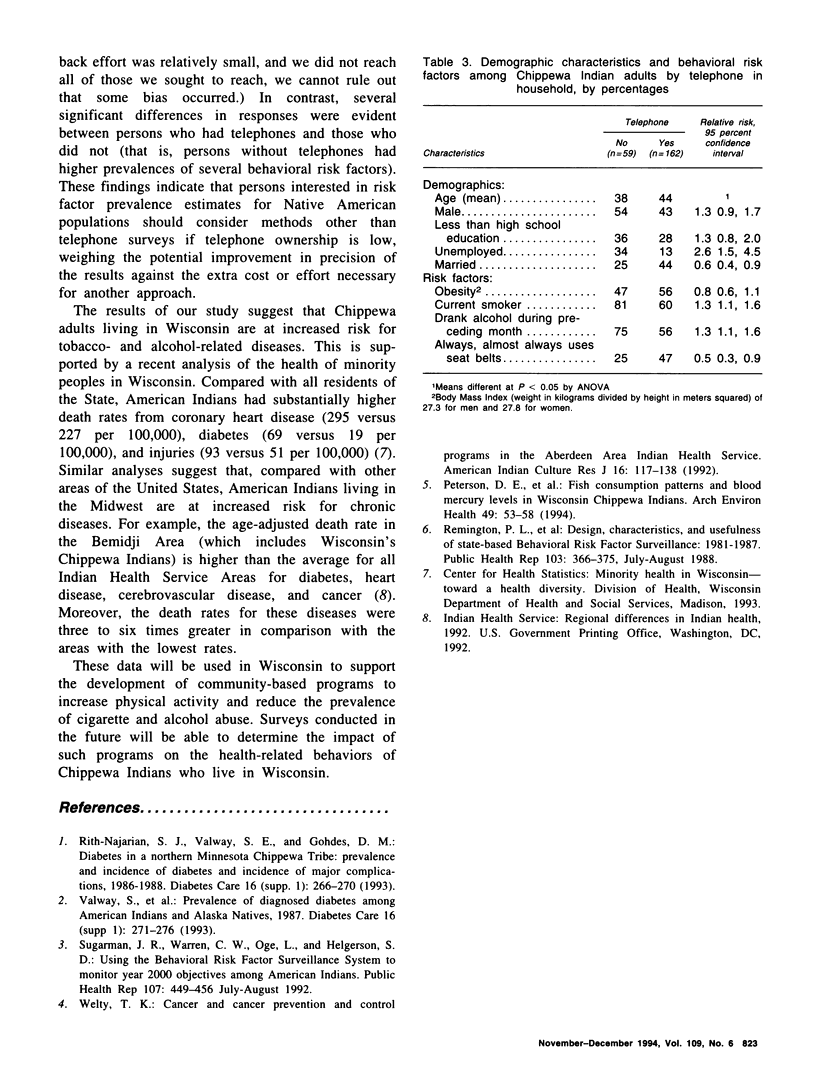Abstract
Behavioral risk factors and chronic disease death rates vary markedly among the numerous American Indian tribes. Local data on prevalence of risk factors are important in determining effective community-based interventions. The authors conducted an in-person survey to ascertain the prevalence of behavioral risk factors among members of the Chippewa tribe living on reservations in Wisconsin. A total of 465 Chippewa adults were randomly selected from tribal registries and invited to participate in the study. Of these, 175 (38 percent) participated. To characterize nonrespondents, 75 nonrespondents were randomly selected and aggressively followed up. The authors compared their results with data from the 1989 Wisconsin Behavioral Risk Factor Surveillance System. Chippewa respondents reported high levels of obesity and tobacco use. No significant differences existed between the original survey and followback of nonrespondents. Compared with respondents who had telephones, those without telephones were significantly more likely to be unemployed, to be a current smoker or drinker, and to report nonuse of seatbelts. Compared with the general Wisconsin population, Chippewa adults appear to have higher prevalences of several chronic disease and injury risk factors. The original survey methodology, despite the low response rate, appeared to give a more accurate (less biased) estimate of risk factor prevalences than would have been achieved by a telephone survey.
Full text
PDF



Selected References
These references are in PubMed. This may not be the complete list of references from this article.
- Peterson D. E., Kanarek M. S., Kuykendall M. A., Diedrich J. M., Anderson H. A., Remington P. L., Sheffy T. B. Fish consumption patterns and blood mercury levels in Wisconsin Chippewa Indians. Arch Environ Health. 1994 Jan-Feb;49(1):53–58. doi: 10.1080/00039896.1994.9934415. [DOI] [PubMed] [Google Scholar]
- Remington P. L., Smith M. Y., Williamson D. F., Anda R. F., Gentry E. M., Hogelin G. C. Design, characteristics, and usefulness of state-based behavioral risk factor surveillance: 1981-87. Public Health Rep. 1988 Jul-Aug;103(4):366–375. [PMC free article] [PubMed] [Google Scholar]
- Rith-Najarian S. J., Valway S. E., Gohdes D. M. Diabetes in a northern Minnesota Chippewa Tribe. Prevalence and incidence of diabetes and incidence of major complications, 1986-1988. Diabetes Care. 1993 Jan;16(1):266–270. doi: 10.2337/diacare.16.1.266. [DOI] [PubMed] [Google Scholar]
- Sugarman J. R., Warren C. W., Oge L., Helgerson S. D. Using the Behavioral Risk Factor Surveillance System to monitor year 2000 objectives among American Indians. Public Health Rep. 1992 Jul-Aug;107(4):449–456. [PMC free article] [PubMed] [Google Scholar]
- Valway S., Freeman W., Kaufman S., Welty T., Helgerson S. D., Gohdes D. Prevalence of diagnosed diabetes among American Indians and Alaska Natives, 1987. Estimates from a national outpatient data base. Diabetes Care. 1993 Jan;16(1):271–276. doi: 10.2337/diacare.16.1.271. [DOI] [PubMed] [Google Scholar]


